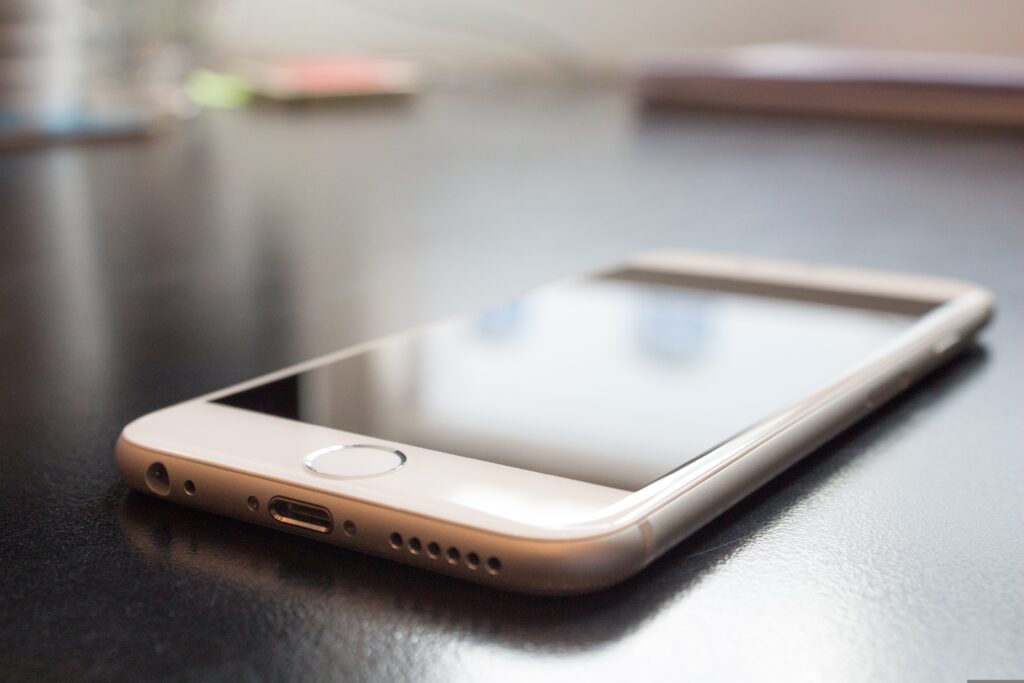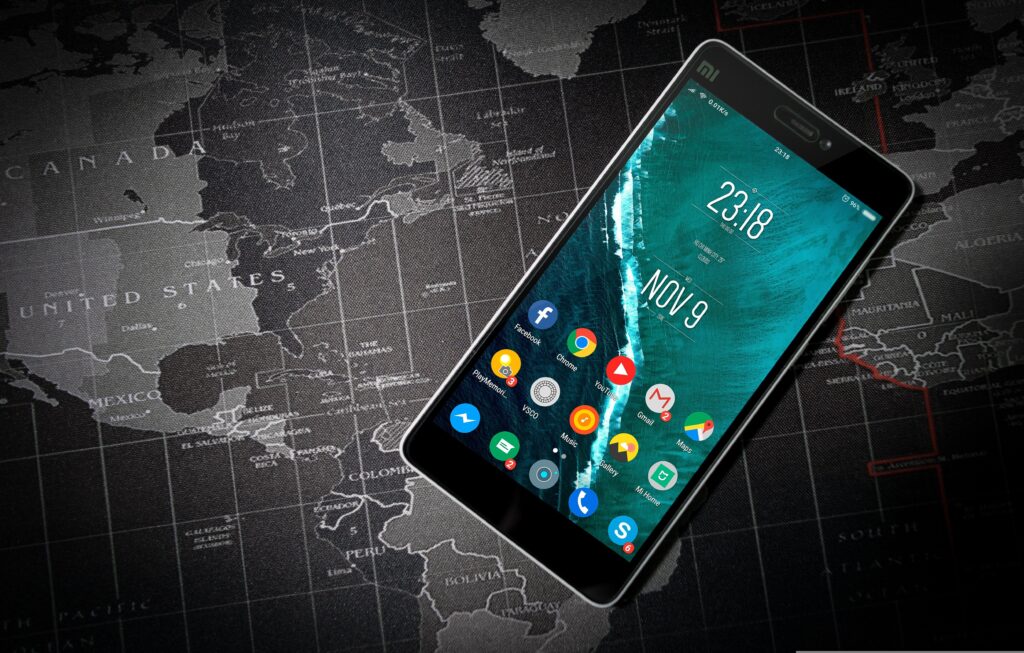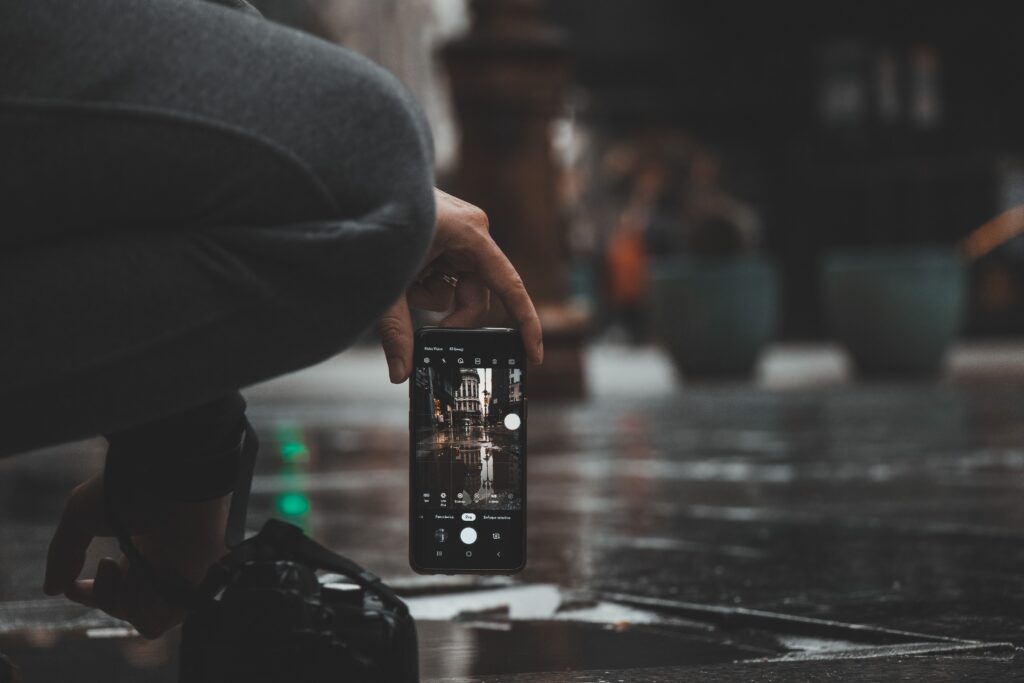Cheap Phones: Affordable Options without Compromising Quality
In today’s fast-paced world, smartphones have become indispensable tools for navigating our personal and professional lives. They provide seamless access to information, communication, and entertainment. However, not everyone can afford flagship devices that come with hefty price tags—some exceeding $1,000. That’s where cheap phones, also referred to as budget phones, come into play.
Historically, cheap phones were synonymous with compromise—lower-quality builds, poor performance, and outdated features. However, the landscape has shifted dramatically, and budget smartphones now offer essential features at a fraction of the cost of premium models. This article delves into the evolution of affordable phones, the features you should prioritize, and a comprehensive comparison of the best cheap phones available today.

Chapter 1: Why Choose a Cheap Phone?
1.1. Affordability Without Sacrifice
One of the primary reasons to consider cheap phones is their affordability. Budget smartphones typically fall within the $100-$300 range, a far cry from high-end devices that can cost over $1,000. For many, spending such an amount on a phone simply isn’t practical, especially when affordable phones can deliver reliable performance for most tasks.
Cheap phones offer excellent value for money because they are designed to meet the needs of the average user. If your usage consists mainly of basic tasks such as making calls, sending texts, browsing the web, using social media, and even watching videos or playing casual games, a cheap phone will serve you well without breaking the bank.
The growing acceptance of cheap phones reflects a broader trend in consumer behavior. With more people recognizing the diminishing returns on high-end features they may never use, the demand for budget-friendly alternatives is surging. Consumers are increasingly opting for cheap phones that fulfill their daily needs while keeping their expenses in check.

1.2. Evolving Technology in Affordable Phones
The landscape of cheap phones has evolved tremendously in the past decade. Previously, buying a cheap phone meant accepting poor performance, limited features, and an unattractive design. However, advancements in technology and increased competition among manufacturers have made budget phones much more capable.
Today, cheap phones come with large displays, decent cameras, long battery life, and even features like 5G connectivity. Companies like Xiaomi, Realme, Motorola, and Nokia have made it their mission to provide budget-conscious consumers with phones that don’t skimp on essential features. This evolution means that you can now find phones with multi-camera setups, large displays, high-capacity batteries, and fast-charging capabilities at very reasonable prices.
As manufacturers compete for market share, they often incorporate premium features into their budget offerings. This competitive landscape ensures that consumers benefit from ongoing innovations, making cheap phones not just a practical choice but a savvy one as well.

1.3. Longevity and Durability
Another aspect worth considering is the durability of cheap phones. Flagship devices often come with sleek glass backs that are beautiful but fragile. Dropping one of these phones can result in costly repairs, sometimes amounting to hundreds of dollars. Cheap phones, on the other hand, are often designed with more robust materials such as plastic backs and thicker bezels, making them less likely to shatter when dropped.
In addition to being more durable, budget phones can also be less stressful to own. If you’re someone who is worried about damaging an expensive device or losing it, a cheaper phone can offer peace of mind. You won’t be as anxious about it getting damaged, as replacements are significantly less expensive.
This durability is especially crucial for users in demanding environments—such as those who work outdoors or have active lifestyles—where the risk of dropping or damaging their phone is higher. A cheap phone that can withstand rough handling is not only cost-effective but also practical.

1.4. Environmental Considerations
Buying cheap phones can also be seen as a more environmentally friendly choice. Many flagship devices are made with rare and expensive materials that contribute to electronic waste when discarded. Moreover, premium phones often come with features that the average user may never fully utilize, leading to unnecessary energy consumption.
Budget phones are simpler in design and often require fewer resources to manufacture. By purchasing a cheaper phone, you can reduce your carbon footprint, especially if you’re someone who tends to replace phones frequently. Additionally, many cheap phones are designed to last longer due to their durability, meaning they won’t end up in a landfill as quickly.
Choosing to buy cheap phones can be a conscious decision to promote sustainability. As consumers increasingly value eco-friendliness, opting for budget-friendly devices helps reduce waste and promotes a cycle of reusability.

Chapter 2: Essential Features to Look for in Cheap Phones
Cheap phones don’t necessarily mean compromising on features. However, it’s essential to know which features are most important for your daily usage and which you can afford to overlook. This section covers the key aspects to consider when choosing a budget smartphone.
2.1. Battery Life: Power that Lasts
One of the most critical features of any smartphone is its battery life, and in this regard, many cheap phones excel. Battery technology has improved significantly, and even budget smartphones are now equipped with large batteries capable of lasting an entire day or more on a single charge.

Battery life is especially important for people who spend long hours on the go without access to a charger. Phones like the Moto G Power are known for offering exceptional battery life, sometimes lasting up to two days under normal usage. Phones in the affordable category often have large battery capacities (over 4,000 mAh), ensuring that they remain operational throughout the day.
When considering battery life, it’s also essential to look at the phone’s power consumption. A larger battery doesn’t always mean longer life if the phone’s hardware is power-hungry. Some budget phones optimize power usage with energy-efficient processors, contributing to longer battery life.
For example, a phone with a 5,000 mAh battery can be more efficient when paired with a processor designed for low power consumption. This synergy between hardware and battery technology means users can enjoy extended use without constantly searching for a charger.
2.2. Display Quality: Big and Bright

The display is another key feature to evaluate in cheap phones. While you won’t find cutting-edge OLED or AMOLED panels in most budget devices, many affordable options still come with high-quality screens that are bright and sharp enough for everyday use. Many cheap phones now offer HD+ or Full HD (1080p) displays, which provide a good viewing experience for tasks such as web browsing, video streaming, and gaming.
Screen size has also increased in budget phones. Nowadays, even cheap smartphones often feature large displays, ranging from 6 to 6.8 inches. This means that watching videos and reading content is a much more enjoyable experience compared to earlier budget phones, which often came with smaller screens.
Cheap phones may not have ultra-smooth refresh rates, but many offer a respectable 60Hz or 90Hz refresh rate, providing smooth scrolling and gaming. For most users, this is more than sufficient for daily tasks.
Moreover, manufacturers are increasingly incorporating features such as Gorilla Glass for better scratch resistance and enhanced touch sensitivity, ensuring that the displays on cheap phones can withstand daily wear and tear while delivering a satisfying user experience.
2.3. Camera Performance: More Than Meets the Eye
Camera quality is one area where cheap phones have made significant strides. In the past, budget devices were notorious for having subpar cameras that produced grainy and blurry images. However, technological advancements have allowed manufacturers to equip budget phones with capable cameras that deliver decent photo quality in good lighting conditions.
Many cheap phones now come with multiple camera sensors, including wide-angle and macro lenses, offering users more versatility when capturing photos. For example, the Samsung Galaxy A series features impressive main cameras, which are remarkable for phones priced under $200. While these cameras won’t rival flagship models, they are more than sufficient for capturing memories, posting on social media, and casual photography.
In addition to hardware improvements, software enhancements such as AI-based scene recognition and image processing have also made their way into budget phones. These features help optimize photos by adjusting color balance, exposure, and focus, even if the hardware isn’t top-tier.
For instance, budget phones like the Redmi Note series leverage software optimizations that can make photos taken in challenging conditions look significantly better. With features such as portrait mode and night mode, cheap phones are increasingly catering to photography enthusiasts on a budget.
2.4. Performance and RAM: Smooth Multitasking
Performance is an area where cheap phones have improved tremendously in recent years. While you may not get the latest Qualcomm Snapdragon chip found in flagship devices, many budget phones come with mid-range processors that are more than capable of handling day-to-day tasks like browsing, social media, and video streaming.
When choosing a budget phone, pay close attention to the amount of RAM it offers. RAM (Random Access Memory) is crucial for multitasking and smooth performance. A phone with at least 3GB to 4GB of RAM should be able to handle most apps and tasks without lagging. More demanding apps and games may require 6GB or more, but for everyday usage, 4GB is usually enough.
Moreover, advancements in processor technology mean that even lower-tier chips can provide surprisingly robust performance. For instance, budget phones featuring MediaTek Dimensity or Qualcomm Snapdragon processors can offer smooth experiences without the significant costs associated with higher-end models.
2.5. Storage Space: Keeping Your Data Safe
Another factor to consider is storage space in cheap phones. Many budget devices now come with 64GB of internal storage, which is usually enough for casual users who download apps, store photos, and save a few videos. If you need more space, some budget phones offer the option to expand storage via a microSD card slot. This is
a feature that can add significant value, as it allows users to increase their device’s capacity without paying for a higher storage variant.
For example, phones like the Nokia G series come with both adequate internal storage and a microSD card slot, ensuring users have plenty of room for their files and media. Opting for a device that offers expandable storage can help future-proof your purchase.
Chapter 3: The Best Cheap Phones of the Year
Now that we’ve explored what to look for in cheap phones, let’s delve into a selection of some of the best budget smartphones currently available. This section highlights top choices across various price ranges, ensuring there’s something for everyone.
3.1. Xiaomi Redmi Note 11
The Xiaomi Redmi Note 11 stands out as one of the best budget options on the market. With a stunning 6.43-inch AMOLED display, it offers vibrant colors and excellent visibility in sunlight. Equipped with a MediaTek Helio G88 processor and up to 6GB of RAM, it ensures smooth performance for daily tasks.
Its camera system includes a 50MP main sensor, which captures impressive photos, even in challenging lighting conditions. The 5,000 mAh battery provides excellent longevity, easily lasting through a full day of usage. With MIUI based on Android, users also enjoy a host of customization options.
3.2. Samsung Galaxy A32
The Samsung Galaxy A32 is another excellent choice for budget-conscious consumers. With a 6.4-inch Super AMOLED display, it delivers stunning visuals. The phone features a quad-camera setup, including a 64MP main camera, an 8MP ultra-wide lens, and a macro sensor, making it versatile for various photography needs.
Powered by the MediaTek Helio G80 processor, it provides decent performance for casual gaming and multitasking. Additionally, its 5,000 mAh battery ensures all-day usage without worrying about frequent recharging.
3.3. Moto G Power (2022)
Known for its incredible battery life, the Moto G Power (2022) offers a robust 5,000 mAh battery that can easily last two days on a single charge. The 6.5-inch display is ideal for media consumption, and the Snapdragon 662 processor provides sufficient power for daily tasks.
Its triple-camera system features a 50MP main sensor, ensuring quality images, while the near-stock Android experience provides a clean interface without bloatware. This phone is perfect for users who prioritize battery life and a simple, user-friendly experience.
3.4. OnePlus Nord N200
The OnePlus Nord N200 is an impressive budget offering that doesn’t skimp on features. With a 6.49-inch display and a 90Hz refresh rate, it delivers a smooth experience while scrolling and gaming. The Snapdragon 480 processor provides good performance for multitasking and casual gaming.
The camera setup includes a 13MP main sensor, offering decent photography capabilities. One of its standout features is the inclusion of 5G support, making it a great choice for users looking to future-proof their device.
3.5. Nokia G20
The Nokia G20 is designed with durability in mind, featuring a sturdy build and a 6.5-inch display. Powered by the MediaTek Helio G35 processor, it provides reliable performance for everyday tasks. The 48MP quad-camera system ensures you can capture detailed photos and videos.
One of the notable features of the Nokia G20 is its commitment to software updates, promising two years of Android updates and three years of security updates. This makes it a solid investment for users who value longevity and security in their devices.
Tips for Maximizing Your Cheap Phone Experience
Buying a cheap phone is just the beginning. To get the most out of your device, here are some tips to enhance your experience:
4.1. Use Lite Apps
Many popular apps come with “lite” versions designed to consume fewer resources and data. These lite apps are perfect for cheap phones, helping you save storage and ensuring smoother performance. For instance, Facebook Lite and Messenger Lite can provide the core functionalities without the heavy overhead of their full versions.
4.2. Optimize Storage Space
Regularly check your phone’s storage to avoid running out of space. Delete unused apps, clear caches, and transfer photos to cloud storage. Utilizing services like Google Photos can help you back up images without taking up local storage, ensuring you have enough space for essential apps and files.
4.3. Adjust Display Settings
To conserve battery life, consider lowering the screen brightness or enabling adaptive brightness features. Additionally, you can reduce the screen timeout duration to prevent the display from staying on longer than necessary.
4.4. Disable Unnecessary Background Apps
Many apps run in the background, consuming battery and performance. Regularly review your running apps and disable those that you don’t need. This not only enhances performance but also improves battery longevity.
4.5. Take Advantage of Battery Saver Modes
Most cheap phones come with built-in battery saver modes. Enable these features when you notice your battery is running low. They often reduce background activity, limit performance, and adjust settings to help extend your phone’s battery life.
FAQs about Cheap Phones
What are the most reliable brands for cheap phones?
Several brands are recognized for producing reliable budget phones, including Xiaomi, Samsung, Motorola, and Nokia. Each of these companies has a track record of delivering quality devices that meet the needs of budget-conscious consumers.
Can I get good camera quality in a cheap phone?
Yes, many cheap phones today come equipped with capable cameras. While they may not match flagship models, budget phones often feature multi-camera setups that deliver decent photo quality in good lighting conditions.
How often should I upgrade my cheap phone?
This depends on your usage. If your phone meets your needs, there’s no reason to upgrade frequently. However, consider upgrading if your device is significantly slow, has limited support for updates, or cannot run essential apps.
Are cheap phones compatible with 5G networks?
Many recent budget models, such as the OnePlus Nord N200, come with 5G support. If this is a priority for you, look for budget phones that explicitly state compatibility with 5G networks.
What should I prioritize when buying a cheap phone?
When shopping for a budget phone, prioritize battery life, display quality, and performance based on your typical usage. Additional features like camera quality and storage capacity are also important, but consider your personal needs when making a decision.
Conclusion: The Smart Choice for Budget-Conscious Consumers
In a world where smartphones have become essential tools, cheap phones offer a practical solution for budget-conscious consumers. With a wide array of options available, you can find devices that provide great performance, durability, and essential features without the exorbitant price tag.
As technology continues to advance, the quality and capabilities of budget smartphones are only expected to improve. By making informed choices and understanding what features matter most, you can enjoy a seamless mobile experience without compromising your finances.
In a rapidly changing market, where premium devices often dominate headlines, affordable options are becoming increasingly attractive for users who value functionality and practicality. The time has come to embrace the potential of cheap phones and make savvy choices that align with your lifestyle and budget.